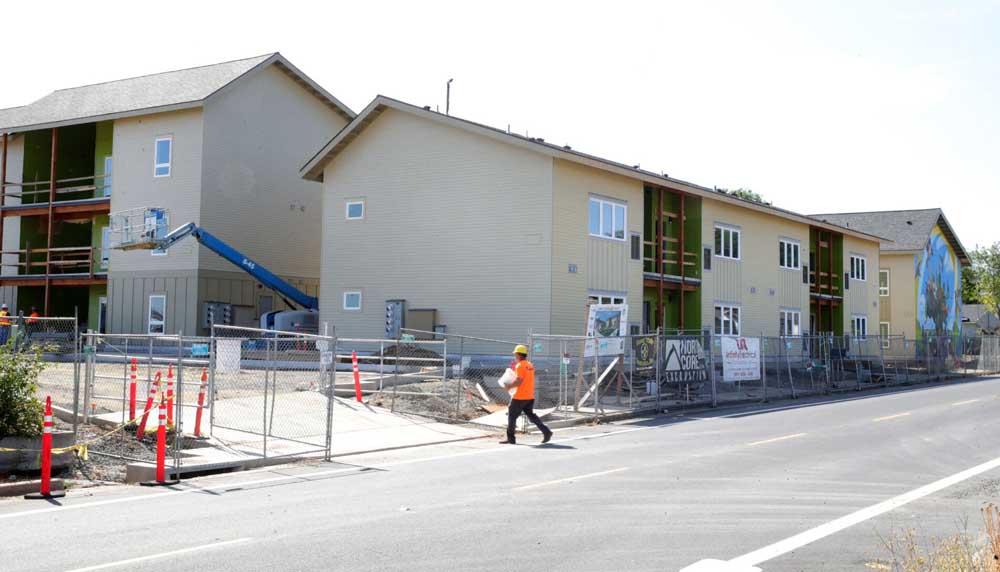Medford eyes novel housing idea with state’s new UGB expansion law
Published 6:00 am Friday, August 23, 2024

- Crews build low-income housing in Medford.
Any developer with a strong desire to turn up to 100 acres just outside Medford into new housing may soon get fast-tracked into the city.
In the near future, Medford City Council will consider taking advantage of a new state law that seeks to encourage bringing in new land for housing as long as 30% is affordable to those with low incomes.
Trending
This departure from the usual long slog of expanding an urban growth boundary would be allowed under Oregon Senate Bill 1537, approved this year, as a way to address the housing crisis in the state.
Cities with a population of 25,000 or greater can add no more than 100 acres of residential land.
Under SB 1537, the actual amount of land brought into the urban growth boundary could be greater than 100 acres because open space and rights-of-way aren’t counted as part of the residential land.
“It could be 150 total acres,” said Matt Brinkley, Medford’s planning director, during an Aug. 8 council study session.
However, the state offer does come with strings attached, including having to guarantee that the affordable housing remains affordable for 60 years.
Brinkley said there has been pressure on the Legislature to ease up on the 60-year time frame.
Trending
Also, the land brought into the city has to be contiguous, though multiple landowners with adjoining parcels could apply together as long as they touch the existing urban growth boundary.
The council will have to act fairly quickly.
Under SB 1537, a city can qualify for the one-time urban growth expansion if 25% of its housing stock is “rent burdened,” which means tenants pay more than 50% of income toward housing. Medford currently has a rate of 25.8%, which could drop below 25% next year with new housing and new apartments currently under construction, Brinkley said.
“We have to be failing at providing affordable housing,” Brinkley said.
He said the city’s existing rent-burdened rate would qualify under SB 1537 as long as the city acts before next year.
One advantage offered by SB 1537 is that the council will not technically be undergoing a more complicated and time-consuming land-use process, Brinkley said.
In the past, it took the city years to approve the 2018 urban growth boundary expansion. In the six years since the expansion occurred, 82% of the land has been annexed inside the city limits.
Brinkley said he has seen interest expressed from developers who might take advantage of SB 1537, and he anticipated the city might receive at least one proposal for a housing project. Councilor Nick Card said he could see throwing this idea out to developers, but added, “This is so bad on so many levels. I’m concerned about the 60-year piece.”
Councilor Jessica Ayres said she wondered how the 60-year covenant would be enforced.
She also wondered how many developers might be interested in this project.
“A lot of developers don’t do affordable housing,” she said.
Councilor Kevin Stine said this would be a far less difficult and labor-intensive process than other land efforts the city has undertaken.
He said the city should throw it out there and see if a developer is interested, and if there are multiple offers the council could pick one.
“We did an urban growth boundary and nobody got everything they wanted,” he said.
The council requested that planning staff prepare a proposal that would include a public notice and request for applications, which, per state law, must be returned in a minimum of 45 days.








